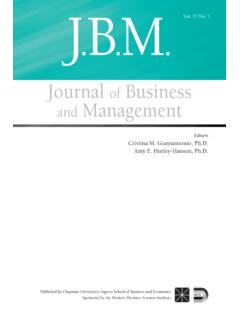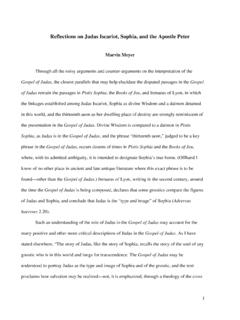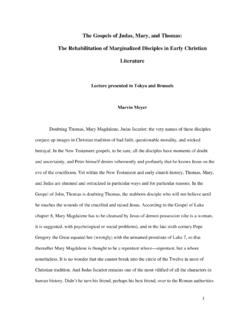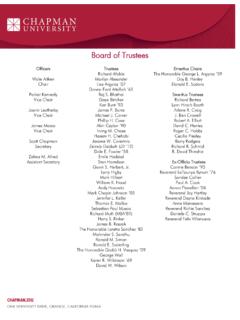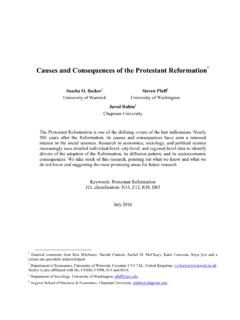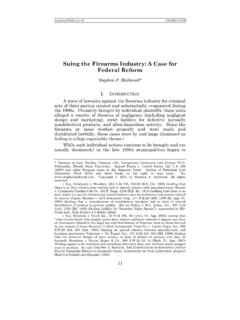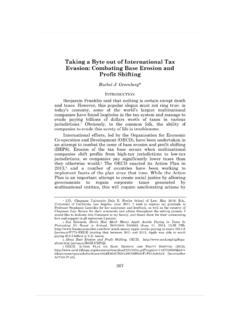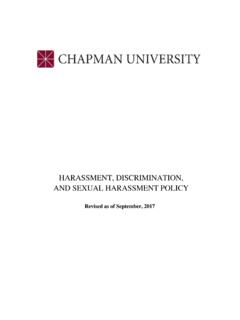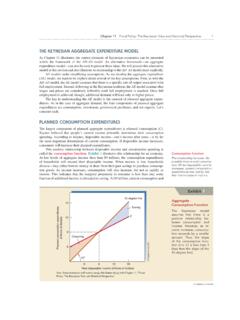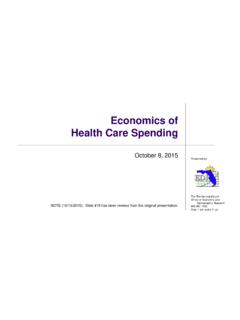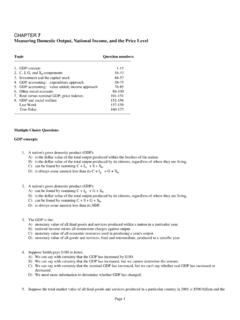Transcription of Household expenditure cycles and economic cycles, 1920 – 2010
1 Household expenditure cycles and economic cycles , 1920 2010 Steven Gjerstad and Vernon L. Smith economic Science Institute Chapman University Orange, CA 92866 June 22, 2010 Abstract The recent recession differs from other post-war recessions in two important respects: it has seriously disrupted the financial system, and it has already exhibited strong resilience to monetary stimulus. Yet, as we demonstrate in this paper, the recent recession shares two important features with other post-war recessions: most recessions originate in a pronounced downturn in expenditures on new single-family and multi-family housing units, and the housing sector is the primary transmission channel for monetary policy in both downturns and recoveries.
2 We argue that there are three reasons this recession differs from past recessions. Excessive mortgage credit augmented by large foreign capital inflows created a house price bubble. When it collapsed, many households and financial firms were left burdened with extreme balance sheet problems. Consequently, accommodative monetary policy has had a muted impact on households that seek to de-leverage rather than borrow for new housing assets. Moreover, in a saturated housing market, residential construction, which has led all sustained post-war recoveries, has also been suppressed.
3 KEYWORDS: Business cycles , durable goods, financial crises, inflation, investment, monetary policy, residential construction JEL Codes: E22, E31, E32, E52, N1, N6 1 1. Introduction The recent economic crisis already deservedly labeled the Great Recession continues to plague the health of the economy as a whole and has motivated us to probe its characteristic features and compare it to recent historical economic downturns, the Great Depression, and to the anomalous recession of The boom began with an unprecedented house price bubble from 1997 to 2006 that was financed by a surge in the net flow of mortgage credit between 1998 and 2006.
4 The large increase in net mortgage credit was itself fed by an equally rapid increase in the current account deficit, which surged from $ billion in 1997 ( percent of GDP) to $ billion in 2006 ( percent of GDP).2 This order of real and financial sector declines and the events that led up to it have provided a fresh perspective with which to examine past economic cycles . We believe that this perspective is likely to change how economists, policy makers, investors and others think about monetary policy, housing cycles , and what have commonly been described as business cycles . Events in the unraveling of the bubble were sharply delineated, progressing from (1) a precipitous decline in expenditure on new single-family and multi-family housing units that began in the second quarter of 2006 to (2) a rapid house price decline beginning early in 2007, (3) a credit market seizure in August 2007, (4) a substantial decline in prices of financial firms stocks in the first half of 2008, (5) deterioration of the financial system in 2008, (6) an aggressive and unprecedented Federal Reserve intervention in September 2008, and (7)
5 A sharp decline in output in the fourth quarter of 2008 and the first quarter of 2009. In the aftermath of these events, many households have suffered extreme balance sheet damage that has suppressed borrowing for new assets and durable goods consumption. Households decreased expenditure on new housing units and durable goods have in turn led to a sharp decline in non-residential fixed investment. We find that eleven of the most recent fourteen economic downturns in the from the Great Depression that began in 1929 to the Great Recession starting in late 2007 were led by 1 In Gjerstad and Smith (2009a) and Gjerstad and Smith (2009b), we describe the interactions between monetary policy, financial developments, the housing bubble, and the course of the recent recession.
6 In Smith and Gjerstad (2010) we compare movements of the components of aggregate output in the Great Depression and the Great Recession. This paper extends our evaluation of movements in GDP components in the last article to the ten post-war recessions that preceded the Great Recession. Our examination of the cycles in these components and particularly the predominant roles of housing and consumer durable goods expenditures in economic expansions and contractions establishes basic facts of economic cycles that are necessary background for more adequate models of the role that monetary policy plays in exacerbating or moderating economic cycles .
7 2 All dollar amounts in this section and in the remainder of the paper are inflation adjusted to 2005 dollars unless otherwise noted. 2 declines in expenditure on new single-family and multi-family housing units. In these eleven downturns, percentage declines in expenditures on new housing units and consumer durables preceded and exceeded percentage declines in every other major component of GDP. In the 1945 recession one of the three recessions in which housing was not implicated national defense expenditures fell while all major components of private expenditure rose.
8 The other two in 1937-38 and 2001 resulted primarily from declines in non-residential fixed investment. Figure 1 shows the percentage of GDP contributed by expenditure on new single-family and multi-family housing units over the past 90 years. Figure 1: expenditure on new single-family and multi-family housing units as a percentage of GDP. Although expenditure on new housing units is not a large component of GDP which may explain its limited role in typical macroeconomic accounts of recessions it is volatile, it has declined before ten of eleven post-war recessions and the Great Depression, it has rarely declined substantially without a recession following soon afterward,3 3 In 1950-51 expenditure on new housing units declined sharply and remained at its lower level without a recession following soon afterward.
9 Durables fell too during the same period, but defense expenditure increased 90 percent more than the decline in housing plus durables expenditures. From early 1964 to early 1966, expenditure on new housing units declined, but households durable goods consumption increased sharply so that the sum of households expenditure on new housing units and consumer durables rose from the first quarter of 1964 to the first quarter of 1966. During 1966, the sum of housing and durable goods declined, but defense expenditures increased slightly more than housing and durables declined, while a recession was narrowly averted.
10 And the extent of its decline emerges as a good predictor of the depth and duration of the recession that follows. In addition to its role as a leading indicator, and its volatility over the economic cycle , expenditure 3 on new housing units has recovered faster than any other major sector of the economy after every recession since 1920-21, with the single exception of the 1980 recession when the housing recovery faltered after two quarters and a new recession began two quarters later. One of our main objectives in this paper is to demonstrate that interest rate sensitive components of Household expenditures play a large role in economic fluctuations.
